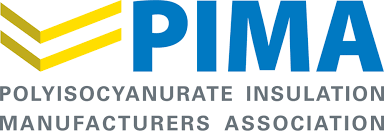Polyisocyanurate Insulation Manufacturers Association (PIMA)
The Polyisocyanurate Insulation Manufacturers Association (PIMA) is the North American trade association representing Polyiso insulation manufacturers and suppliers to the Polyiso industry. PIMA advances the use of Polyiso insulation and is one of the foremost industry advocates for energy-efficient practices and policies. In addition, PIMA has been recognized by both the Environmental Protection Agency (EPA) and the Sustainable Building Industries Council for advocacy and products. Learn more about PIMA's history.
PIMA Members
PIMA’s membership includes Polyiso insulation manufacturers and suppliers to the Polyiso industry. PIMA represents the public policy interests of Polyiso manufacturers and suppliers at the local, national and international level, while advancing the message of high-performance building construction. For a list of PIMA members, associate members and affiliate members, visit PIMA Members.
Initiatives
As an award-winning association, PIMA has been a leader of programs and a supporter of legislation playing an important role in a variety of public initiatives including:
-
Education - PIMA publishes technical bulletins and other educational materials to increase the building industry’s understanding of product benefits.
-
Product Development - PIMA, in partnership with other organizations, has performed joint research and development of standards and product improvements.
-
Recognized Leadership - PIMA is both a national and international advocate for energy efficiency programs. PIMA members and staff serve leadership roles in key energy efficiency advocacy organizations, and PIMA staff have played advisory roles to key governmental agencies on issues ranging from ozone depletion to climate change.
-
Legislative Support - PIMA has been a tireless advocate for enhanced state energy codes and other government policies motivating building owners and contractors to heighten building envelope performance. PIMA has also strongly supported legislative policy to encourage federal tax incentives for energy-efficient commercial buildings.
C-PACE Financing: An Innovative Tool for Commercial Roof Improvements
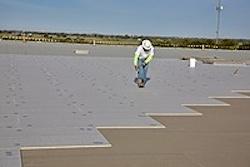 C-PACE – or Commercial Property Assessed Clean Energy – is a financing solution that connects building owners with 100% financing for project costs related to existing building energy efficiency and renewable energy improvements.The financing is secured by the building with long-term repayment plans, up to 30-year terms, which are added to the property’s tax bill. C-PACE financing programs are now active in over 30 states and the District of Columbia with additional jurisdictions expected to adopt authorizing legislation or launch programs soon.
C-PACE – or Commercial Property Assessed Clean Energy – is a financing solution that connects building owners with 100% financing for project costs related to existing building energy efficiency and renewable energy improvements.The financing is secured by the building with long-term repayment plans, up to 30-year terms, which are added to the property’s tax bill. C-PACE financing programs are now active in over 30 states and the District of Columbia with additional jurisdictions expected to adopt authorizing legislation or launch programs soon.
As C-PACE programs continue to gain familiarity across the country, the innovative financing solution has been used increasingly to underwrite roof improvement projects on commercial buildings. These projects include both energy efficiency improvements as well as rooftop solar installations. Join C-PACE program administration experts to learn more about this attractive financing tool and how building owners and roofing professionals have deployed its benefits to improve building performance.
Learning Objectives:
-
Understand how C-PACE financing works and why its 100% long-term benefits are a compelling solution when coupled with roofing projects.
-
Identify which states and jurisdictions currently operate C-PACE programs and where new programs are under development.
-
Explain how C-PACE financing can be used to underwrite roof improvement projects on commercial buildings.
-
Learn how to increase your knowledge on C-PACE financing and how to stay current on program developments in the areas you do business.
Presenters:
-
Brian McCarter, CEO, Sustainable Real Estate Solutions (leading C-PACE program administrator)
-
Tracy Phillips, Director, Colorado C-PACE Program
Energy and Carbon Emissions Savings Benefits of Roof Replacements
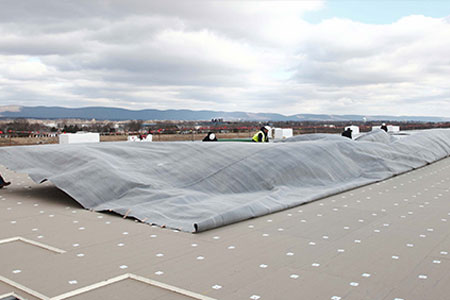 Low-sloped roofs comprise the largest thermal envelope surface of most non-residential buildings, which creates an opportunity to cost-effectively improve building energy performance during roof replacement projects. Where an existing roof contains insulation entirely above the deck and requires replacement, model energy codes and standards require that the replacement roof system comply with minimum thermal envelope insulation levels. For buildings constructed prior to the wide-spread adoption of energy codes, energy-code compliant roof replacements can significantly decrease whole-building energy use and reduce associated costs and carbon emissions. Understanding these benefits can help building owners make informed decisions that maximize the savings opportunities during alteration projects.
Low-sloped roofs comprise the largest thermal envelope surface of most non-residential buildings, which creates an opportunity to cost-effectively improve building energy performance during roof replacement projects. Where an existing roof contains insulation entirely above the deck and requires replacement, model energy codes and standards require that the replacement roof system comply with minimum thermal envelope insulation levels. For buildings constructed prior to the wide-spread adoption of energy codes, energy-code compliant roof replacements can significantly decrease whole-building energy use and reduce associated costs and carbon emissions. Understanding these benefits can help building owners make informed decisions that maximize the savings opportunities during alteration projects.
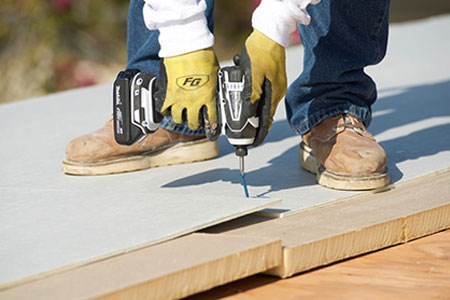 PIMA worked with the globally-recognized firm, ICF International, to quantify the benefits of energy code-compliant roof replacements in terms of energy and carbon emissions savings for the following common building types: primary school, retail store, strip mall and small office (source: U.S. Department of Energy (DOE) prototype buildings). The buildings were located in reference cities representing ASHRAE Climate Zones 2-6 for the United States and Canada, per the DOE methodology. The results of this independent analysis demonstrate that code-compliant levels of roof insulation installed entirely above deck can help building owners cost-effectively reach energy reduction goals while cutting costs and carbon emissions in the process. Specific findings from the report include:
PIMA worked with the globally-recognized firm, ICF International, to quantify the benefits of energy code-compliant roof replacements in terms of energy and carbon emissions savings for the following common building types: primary school, retail store, strip mall and small office (source: U.S. Department of Energy (DOE) prototype buildings). The buildings were located in reference cities representing ASHRAE Climate Zones 2-6 for the United States and Canada, per the DOE methodology. The results of this independent analysis demonstrate that code-compliant levels of roof insulation installed entirely above deck can help building owners cost-effectively reach energy reduction goals while cutting costs and carbon emissions in the process. Specific findings from the report include:
- Roof replacements are life-cycle economical under various conditions even when subjected to higher incremental installation costs and discount rates.
- Roof replacements support the transition to building electrification through a significant reduction in natural gas fossil fuel use and overall improvement in energy efficiency.
- Roof replacements support building performance standards and carbon emissions reduction goals by offering a cost-effective tool to help building owners reduce energy use and their carbon footprint.
The fact sheets below summarize the energy and carbon emissions savings estimates for each of the modeled climate zones and the building types within each region. Download the ICF International Research Report.
Significant Energy Savings Available with Existing Building Insulation Retrofits
The energy and electricity used to operate existing buildings account for 30 percent of economy-wide greenhouse gas emissions in the United States. Improving the energy-efficiency performance of existing homes, commercial buildings, schools and industrial buildings is critical to meeting local, state and federal sustainability goals. PIMA, along with other insulation-focused associations, asked ICF, an international consulting firm with expertise in the energy and efficiency sectors: how much can we reduce U.S. greenhouse gas emissions by investing in cost-effective, easily achievable insulation improvements to existing single-family homes and commercial and industrial buildings? The answer is that insulation upgrades in existing buildings can make a huge impact on reducing emissions equivalent to 40 percent of total natural gas-fired generation in the United States.
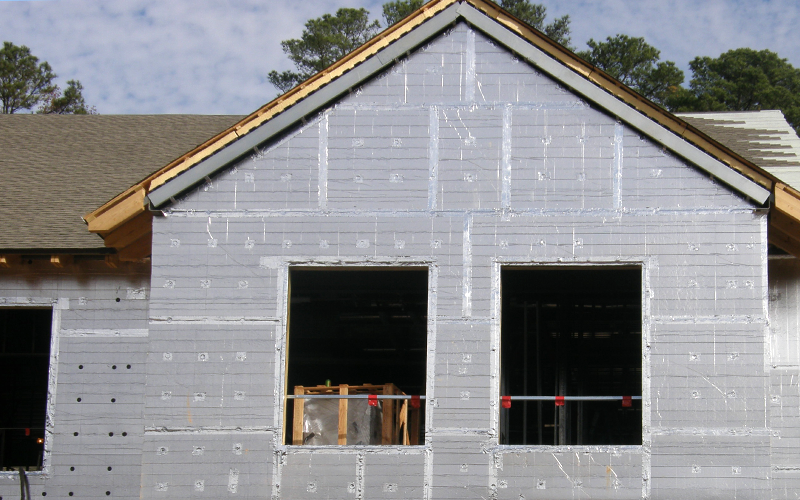 The ICF final report includes three components that each look at common insulation upgrades completed in residential, commercial and industrial buildings. For commercial buildings, ICF analyzed insulation upgrades associated with roof replacements and pipe insulation for the following types of buildings: primary and secondary schools, small and medium offices, stand-alone retail and midrise apartments. These buildings account for approximately 25 percent of the existing commercial building floor space in the United States. Energy-efficient roof replacements account for the majority of potential energy savings in the existing buildings that were part of the study.
The ICF final report includes three components that each look at common insulation upgrades completed in residential, commercial and industrial buildings. For commercial buildings, ICF analyzed insulation upgrades associated with roof replacements and pipe insulation for the following types of buildings: primary and secondary schools, small and medium offices, stand-alone retail and midrise apartments. These buildings account for approximately 25 percent of the existing commercial building floor space in the United States. Energy-efficient roof replacements account for the majority of potential energy savings in the existing buildings that were part of the study.
Specific findings from the commercial building report include:
- Insulation upgrades on average reduce whole-building energy use by 8.7 percent in primary schools and 7.1 percent in secondary schools.
- For the commercial buildings in this study, adding insulation during roof replacement reduces CO2 equivalent emissions by more than 337 million metric tons over 30 years, or the equivalent of eliminating the CO2 emissions from burning 373 billion pounds of coal.
- Over 30 years, the insulation improvements are estimated to save commercial building operators more than $65 billion in energy costs.
Latest Spanish Content
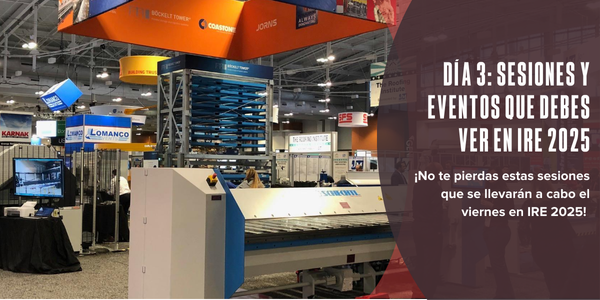
Día 3: Sesiones y eventos esenciales en IRE 2025
Por Anna Lockhart, traducido por Jessica Bravo.
¡No te pierdas estas sesiones que tendrán lugar el viernes en IRE 2025!
International Roofing Expo (IRE) 2025 está a la vuelta de la esquina y los participantes están haciendo planes para asistir a sesiones y eventos interesantes. ¿Ya has echado un ...
View Content
Latest International Content
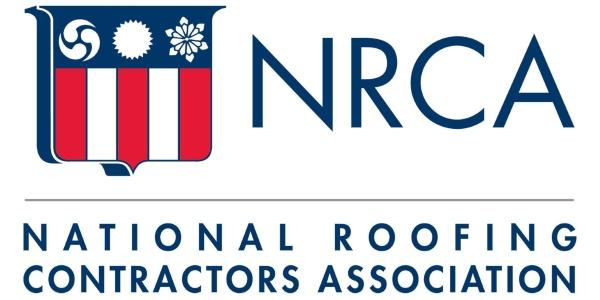
Trade Association Coalition Announces Q3 Findings From Market Index Survey for Reroofing
A coalition of industry trade associations representing contractors, consultants and manufacturers in the U.S. and Canada has completed its Quarterly Market Index Survey for Reroofing for the third quarter of 2023.
The survey is an industrywide effort spearheaded by a coalition of trade assocations, including the Asphalt Roofing Manufacturers Association, Canadian ...
View Content
Latest Canada Content

Trade Association Coalition Announces Q3 Findings From Market Index Survey for Reroofing
A coalition of industry trade associations representing contractors, consultants and manufacturers in the U.S. and Canada has completed its Quarterly Market Index Survey for Reroofing for the third quarter of 2023.
The survey is an industrywide effort spearheaded by a coalition of trade assocations, including the Asphalt Roofing Manufacturers Association, Canadian ...
View Content
Latest Podcasts

Justin Koscher - Decarbonizing the Built Environment
S4:E76
Heidi J. Ellsworth visits with Justin Koscher, president of Polyisocyanurate Insulation Manufacturers Association (PIMA) about the industry survey that PIMA has lead with other industry associations. It is an incredibly knowledgeable industry resource. They talk about the recent industry study which assesses the impact of commercial roof insulation ...
Listen to the Podcast













